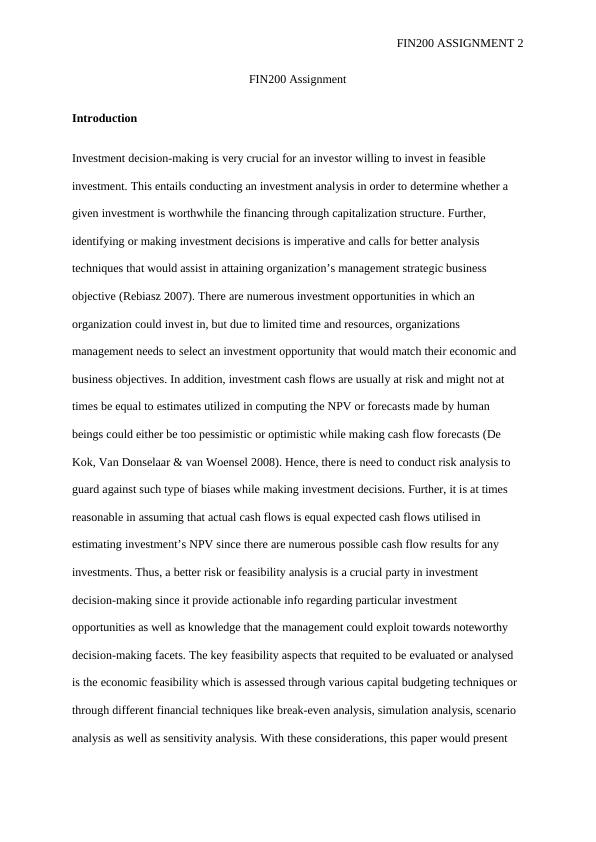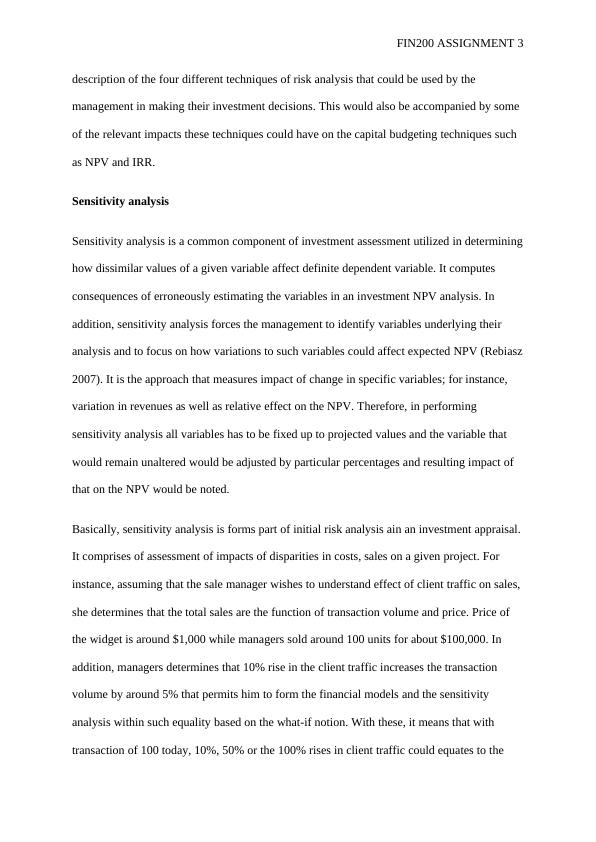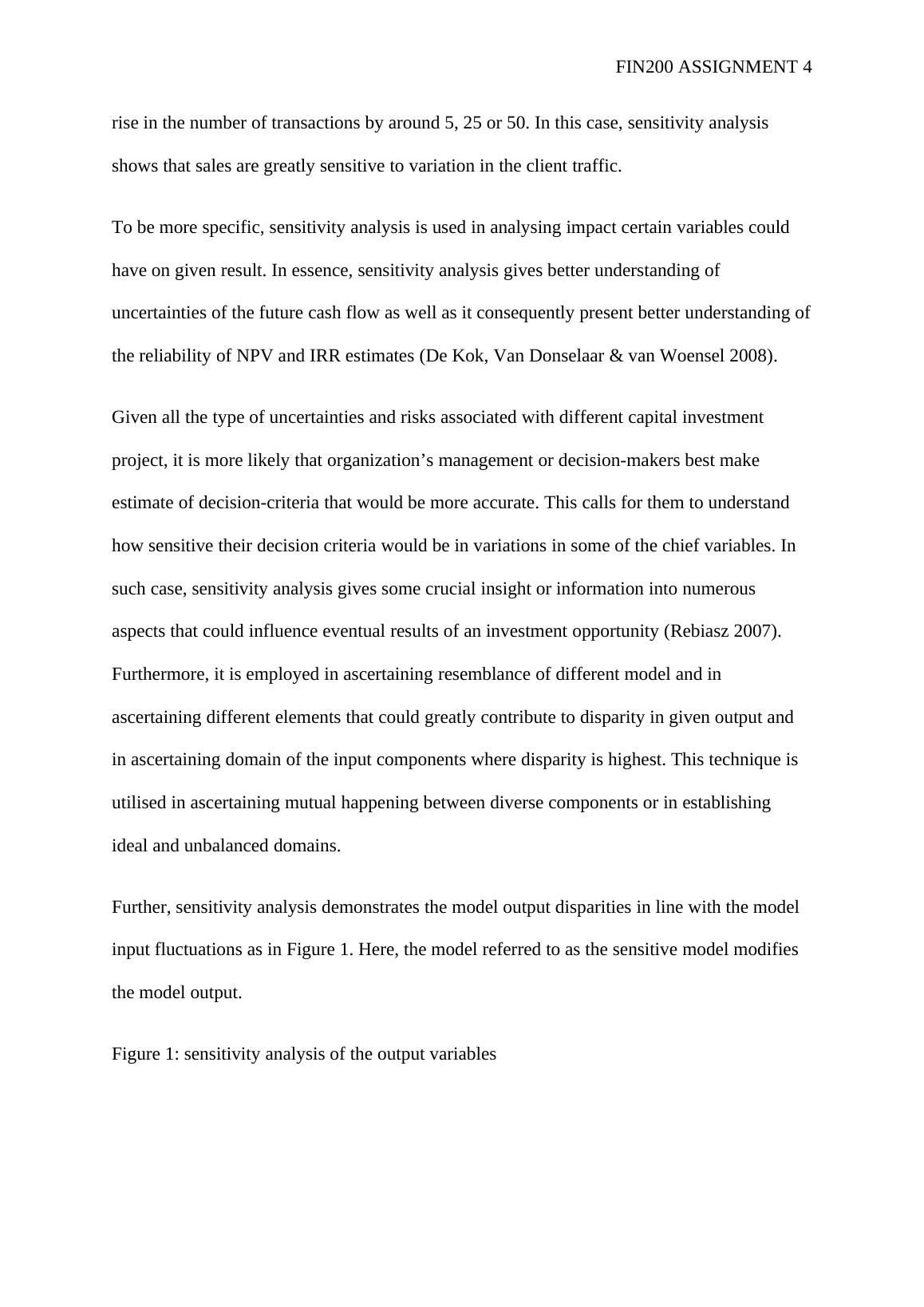Assignment FIN200 | Corporate Financial Management
Added on 2019-11-25
13 Pages3012 Words222 Views
FIN200 ASSIGNMENT 1FIN200 ASSIGNMENTStudent’s NameCourseLecturerInstitutionDate•

FIN200 ASSIGNMENT 2FIN200 AssignmentIntroductionInvestment decision-making is very crucial for an investor willing to invest in feasible investment. This entails conducting an investment analysis in order to determine whether a given investment is worthwhile the financing through capitalization structure. Further, identifying or making investment decisions is imperative and calls for better analysis techniques that would assist in attaining organization’s management strategic business objective (Rebiasz 2007). There are numerous investment opportunities in which an organization could invest in, but due to limited time and resources, organizations management needs to select an investment opportunity that would match their economic and business objectives. In addition, investment cash flows are usually at risk and might not at times be equal to estimates utilized in computing the NPV or forecasts made by human beings could either be too pessimistic or optimistic while making cash flow forecasts (De Kok, Van Donselaar & van Woensel 2008). Hence, there is need to conduct risk analysis to guard against such type of biases while making investment decisions. Further, it is at times reasonable in assuming that actual cash flows is equal expected cash flows utilised in estimating investment’s NPV since there are numerous possible cash flow results for any investments. Thus, a better risk or feasibility analysis is a crucial party in investment decision-making since it provide actionable info regarding particular investment opportunities as well as knowledge that the management could exploit towards noteworthy decision-making facets. The key feasibility aspects that requited to be evaluated or analysed is the economic feasibility which is assessed through various capital budgeting techniques or through different financial techniques like break-even analysis, simulation analysis, scenario analysis as well as sensitivity analysis. With these considerations, this paper would present

FIN200 ASSIGNMENT 3description of the four different techniques of risk analysis that could be used by the management in making their investment decisions. This would also be accompanied by some of the relevant impacts these techniques could have on the capital budgeting techniques such as NPV and IRR.Sensitivity analysisSensitivity analysis is a common component of investment assessment utilized in determininghow dissimilar values of a given variable affect definite dependent variable. It computes consequences of erroneously estimating the variables in an investment NPV analysis. In addition, sensitivity analysis forces the management to identify variables underlying their analysis and to focus on how variations to such variables could affect expected NPV (Rebiasz2007). It is the approach that measures impact of change in specific variables; for instance, variation in revenues as well as relative effect on the NPV. Therefore, in performing sensitivity analysis all variables has to be fixed up to projected values and the variable that would remain unaltered would be adjusted by particular percentages and resulting impact of that on the NPV would be noted.Basically, sensitivity analysis is forms part of initial risk analysis ain an investment appraisal.It comprises of assessment of impacts of disparities in costs, sales on a given project. For instance, assuming that the sale manager wishes to understand effect of client traffic on sales,she determines that the total sales are the function of transaction volume and price. Price of the widget is around $1,000 while managers sold around 100 units for about $100,000. In addition, managers determines that 10% rise in the client traffic increases the transaction volume by around 5% that permits him to form the financial models and the sensitivity analysis within such equality based on the what-if notion. With these, it means that with transaction of 100 today, 10%, 50% or the 100% rises in client traffic could equates to the

FIN200 ASSIGNMENT 4rise in the number of transactions by around 5, 25 or 50. In this case, sensitivity analysis shows that sales are greatly sensitive to variation in the client traffic. To be more specific, sensitivity analysis is used in analysing impact certain variables could have on given result. In essence, sensitivity analysis gives better understanding of uncertainties of the future cash flow as well as it consequently present better understanding ofthe reliability of NPV and IRR estimates (De Kok, Van Donselaar & van Woensel 2008).Given all the type of uncertainties and risks associated with different capital investment project, it is more likely that organization’s management or decision-makers best make estimate of decision-criteria that would be more accurate. This calls for them to understand how sensitive their decision criteria would be in variations in some of the chief variables. In such case, sensitivity analysis gives some crucial insight or information into numerous aspects that could influence eventual results of an investment opportunity (Rebiasz 2007). Furthermore, it is employed in ascertaining resemblance of different model and in ascertaining different elements that could greatly contribute to disparity in given output and in ascertaining domain of the input components where disparity is highest. This technique is utilised in ascertaining mutual happening between diverse components or in establishing ideal and unbalanced domains.Further, sensitivity analysis demonstrates the model output disparities in line with the model input fluctuations as in Figure 1. Here, the model referred to as the sensitive model modifies the model output. Figure 1: sensitivity analysis of the output variables

End of preview
Want to access all the pages? Upload your documents or become a member.
Related Documents
FIN200 Assignment Documentlg...
|9
|2574
|29
RISK MANAGEMENT ANALYSIS FOR PECULAR BUDGETINGlg...
|14
|2747
|264
Methods of Financial Analysis in Capital Budgetinglg...
|11
|2527
|67
FIN200 Corporate Financial Management Assignmentlg...
|11
|2716
|68
Capital Budgeting Analysis for Apix's Diversification into Coffee Packaging Businesslg...
|8
|316
|67
Capital Budgeting Techniques and Cash Flow Determinationlg...
|8
|2724
|309
